
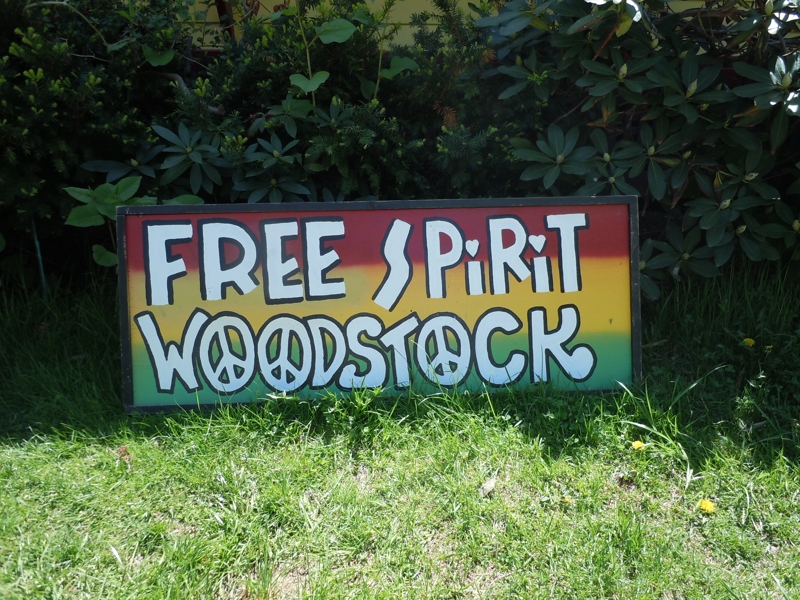
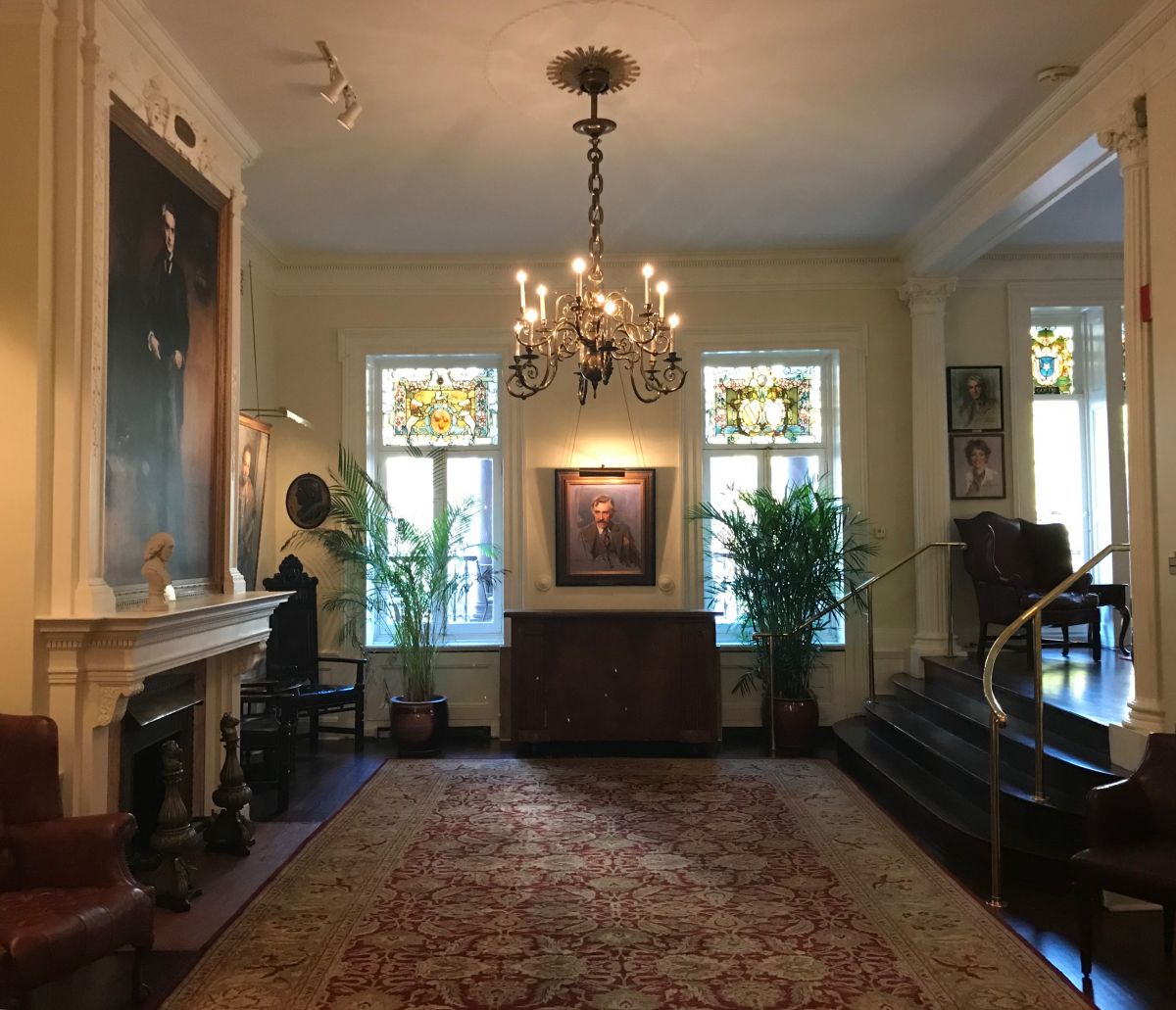
In Italian
There would be really many alternative things to do in New York.
It would be enough to look beyond the attractions and the most told and photographed places for a few hours to discover the most authentic and original essence of a city that for over 300 years has been making up stories and tales linking through an invisible thread common men (and women) and great characters to unusual sites and paths.
I love to discover, visit and then write about these paths because I am firmly convinced that right the stories with their own evocative and emotional strength connect people to places and create that special bound that often it’s enough to motivate the choice – or the umpteenth return, about New York – of a journey.
This time I want to talk about another special place, which was born 170 years ago with the aim to support the enterprises – very often considered impossible – of explorers, pioneers and travelers through the known world and beyond, and miraculously survived the passing of time, the progress and the “modernity”.
I want to tell you the history, the places and the landscapes of the American Geographical Society in New York.
The American Geographical Society – today considered the most ancient geographical society in the United States – was born in New York in 1851, in a luxurious building in Washington Square, with the aim to promote, support and finance the first great expeditions to map the Arctic, the Antarctica and Latin America.
The idea came to a group of wealthy New Yorker businessmen fond of world, who wished to contribute economically to the great explorations and to bound forever their name to the discovery of new paths and territories.
In a short time from an exclusive private club the American Geographical Society became a downright community of professional expert geographers. The scale 1:1.000.000 of Latin America and of some Northern America areas is due to it.
In 1929 the then president John Finley – the New York Times managing editor – introduced the tradition to make sign an old wooden globe given to all the explorers who came back from expeditions as a present.
Today that globe is the Fliers’ & Explorers’ Globe and it is considered one of the most precious terrestrial globes in the world, not much for its “age” – almost 100 years – as to have been by its own way a witness to the most important events, targets, discoveries and expeditions of the 1900s.
On its surface about 85 signatures of great pilots, athletes, navigators, explorers, even astronauts are impressed, accompanied by the courses tracked with red and black ink.
What about some names?
Charles Lindbergh, Amelia Earhart – first female pilot to have crossed the Atlantic – Wiley Post – first aviator to have travelled around the world – Road Amundsen and Robert Peary – first explorers to have reached respectively the South and the North Pole.
And even Neil Armstrong and the crew of the Apollo 8 and 13 shuttle, the cosmonauts Alexei Leonov and Valentina Tereshkova, the first ones to “walk” into the space, and many other ones.
Unfortunately over time the interest for the great explorations decreased and the American Geographical Society was forced to move first to the 156th Street, then to a modest Wall Street office and at the end to Brooklyn, where it has its premises still today.
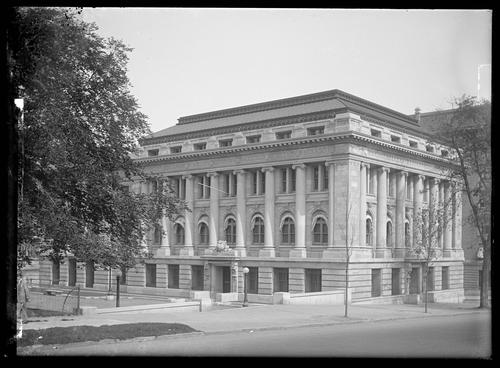
Alternative things to do in New York: the seat of the American Geographical Society on the 156th Street
The suite 201 that today hosts the American Geographical Society in Brooklyn is little over an office with few rooms, apparently nothing special.
But if you stop and observe the details, you’ll realize the exceptionality of the place where you are.
Shelves full of the most precious geographical texts – sometimes one-of-a-kind in the world – ancient maps, vintage images recalling the deeds of the American Geographical Society, a series of relics with the most incredible explorations following one another over years and then the very beautiful Fliers’ & Explorers’ Globe exhibited at intervals always less regular due to the wear and tear.
It’s almost impossible to resist the temptation to come close to the globe and follow with one’s own finger the groove of the courses tracked by the explorers over the 1900s and search for making it turn – the signatures of many of them.
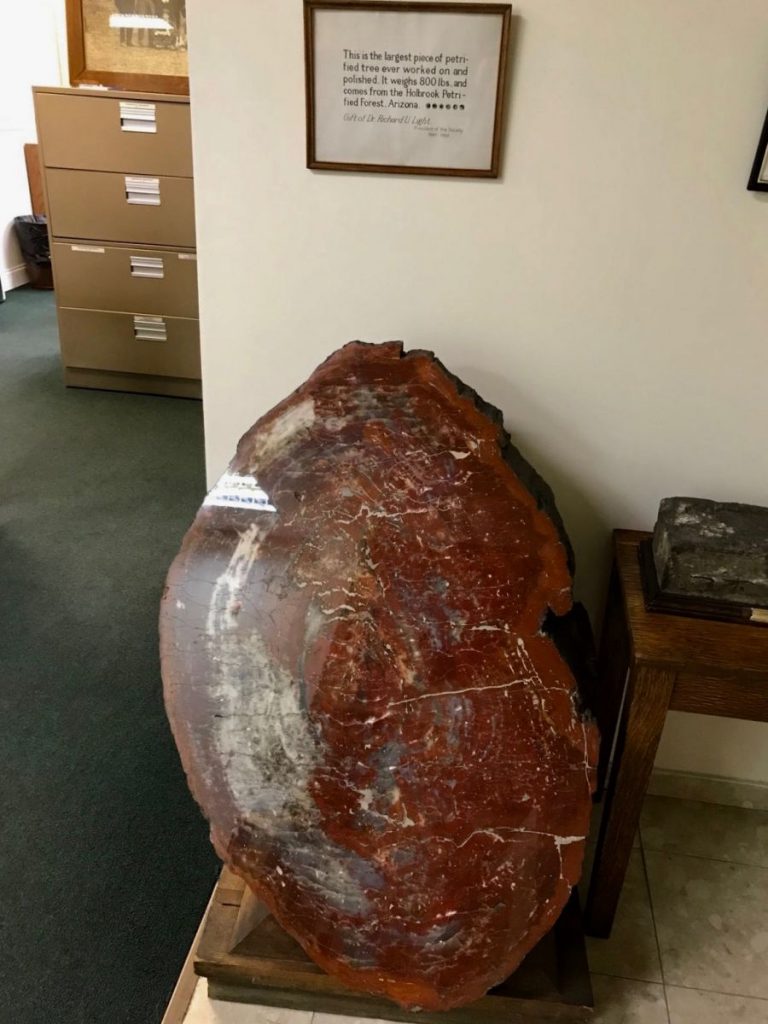
Alternative things to do in New York: visit the American Geographical Society, relics from the Petrified Forest, Arizona
The actual president and his secretary are very kind to show everything.
They will make you turn over the pages of the old texts and maps, to tell you episodes and anecdotes regarding the history and the deeds of the association and at the end of your tour give you some funny gadgets and books related to AGS, to not forget your passage here and once at home in your home country to tell – and so keep the memory over time – the incredible and exciting adventure of the American Geographical Society in New York.
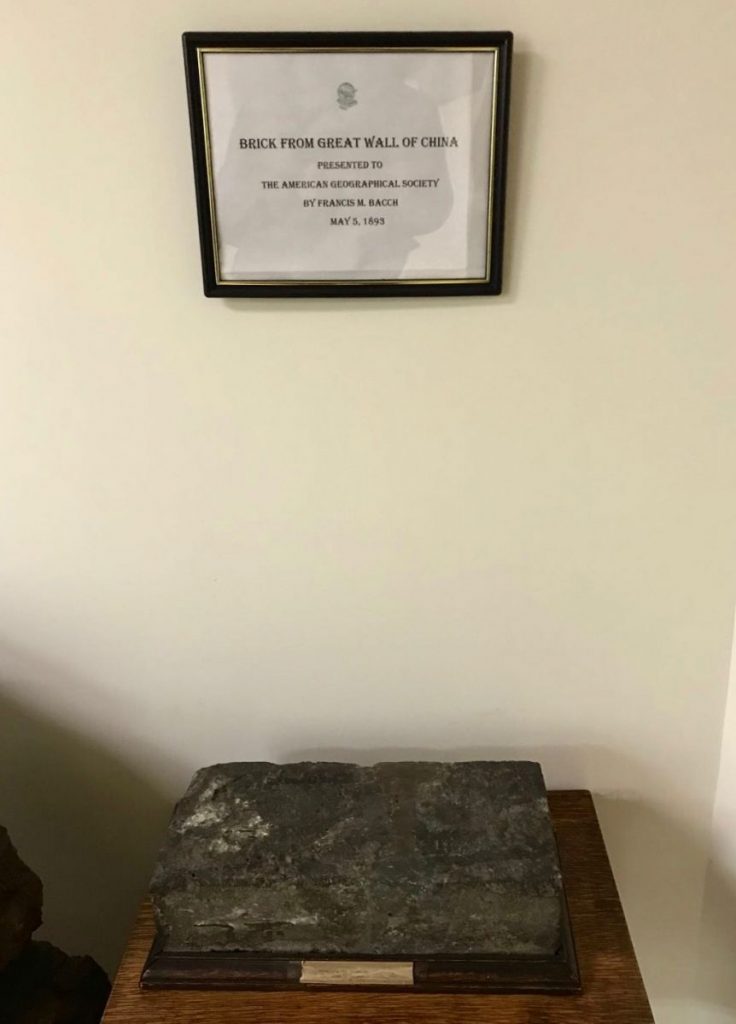
Alternative things to do in New York: visit the American Geographical Society, relics form the Great Wall
The American Geographical Society offices are located in Brooklyn at 32, Court Street and are opened to the public Monday-Friday 9am-5am.
Once entered the building go to the desk where the keepers are, show your ID and ask for gaining access to the AGS. You will be given a temporary pass to go up to Suite 201.
It is allowed to take photographs, but avoid to use the flash on the most ancient texts.
The time of the tour depends on you and on your interest.
You can stay half an hour or really much more if you are fond of old travel stories around the world.